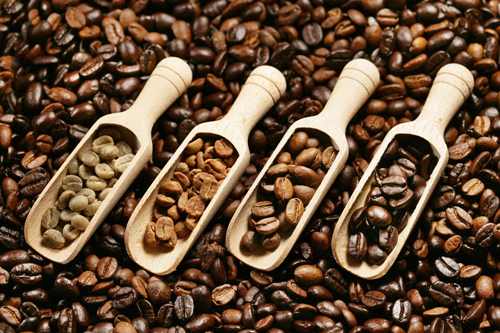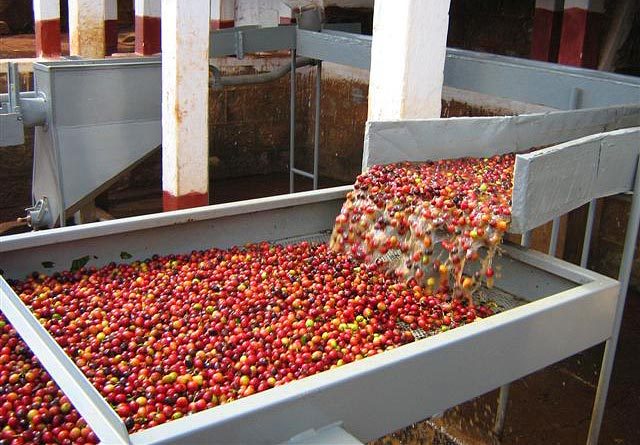Coffee bean washing method | Coffee bean treatment method washing in the sun _ coffee bean semi-washing
When you buy coffee beans, you can always hear the words "water washing", "sun exposure", "half water washing", "half sun drying", "honey treatment" and so on. Today, let's talk about the difference between "washing" and "sunbathing" beans. What effect does it have on the flavor of coffee beans? The coffee beans after harvest must enter the treatment program immediately, otherwise they will begin to ferment, making the coffee beans have a bad smell. There are two methods of treatment: "solarization" and "washing", which will cause different flavors. Sun-dried beans have a complete natural mellow flavor, gentle aroma and more gum; washing rules have a good mellow taste, high aroma and lively sour taste. Mellow taste is an important condition of espresso, which will produce a mellow and smooth feeling as strong as wine. Espresso lovers can increase the weight of sun-dried beans; water-washed beans are as clean as clear wind chimes because of less miscellaneous smell. In addition, washed beans have a good sour taste, which is the main source of sweetness in espresso. Solarization:
The sun drying method is also called "natural drying method" because it uses natural sunlight to dry the fruits and raw beans of coffee. Due to the use of artificial and natural treatment methods in the process, the sun-cured beans look irregular and unflattering in appearance. 1. Choose beans: put the harvested fruit in the water tank, and the ripe fruit will sink, while the immature and overripe fruit will float up and can be removed. 2, drying: put the selected ripe fruit in the square for 5-6 days until it is fully dry. At this time, the fruit becomes dark brown, with a moisture content of 13% 3 and shelling: the dried peel becomes fragile and easy to fall off, and can be removed by machine. Farms run by enterprises usually have their own shelling factories, while small farms are processed by processing centers. 4, selection and grading: delicate farms will identify defective beans manually or by machine, pick them out and throw them away. Manual selection usually uses a transmission belt about 1 meter wide, with several female workers sitting on both sides visually picking out bad beans, and some good farms are even selected several times until defective beans are not seen. Machine selection rules use computers to identify defective beans, followed by a grading process that divides coffee beans into several quality grades according to established standards. Good coffee enters the selected coffee market, while bad coffee flows into the commercial coffee market. 5, polishing: shelling treatment can only remove the exocarp and endocarp, at this time, the silver film is still wrapped in the outer layer of the seed, the film must be ground by machine. Then, pack the coffee beans into a bag of 60KG. The weight of bags varies slightly from region to region. Most of them use sacks. Washing method:
1, choose beans: put the harvested fruit in a water tank and soak for about 24 hours. At this time, ripe fruit will sink, while immature and overripe fruit will float up and can be removed. 2. Remove the pulp: use a machine to remove the skin and pulp, leaving only the coffee beans wrapped in the endocarp. At this time, there is a layer of mucous membrane on the outside of the beans, and the process of washing is to wash this layer of mucous membrane. 3, hair alcohol: the adhesion of the mucosa is very strong, and it is not easy to remove. It must be placed in the slot for about 18-36 hours to make it alcohol and decompose the mucosa. There are two methods of fermentation, namely wet hair alcohol and dry hair alcohol, as the name implies, the former adds water, the latter does not add water. In the process of producing alcohol, the seeds and internal pulp will produce special changes, which is one of the steps that most affect the flavor of coffee. Some farms add hot water or alkanolins to speed up the production of alcohol, which has a negative impact on quality and is not popular with selected coffee lovers. 4. Washing: farms that use the washing method must build washing ponds and be able to introduce an endless supply of live water. During the treatment, the finished beans are put into the pool and passed back and forth, using the friction of beans and the power of running water to wash the coffee beans until smooth and clean. 5, drying: after washing, the coffee beans are still wrapped in the pericarp with a moisture content of 50%. They must be dried to reduce the moisture content to 12%, otherwise they will continue to be mellow, moldy and rotten. The better treatment is to use sunlight to dry, although it will take 1-3 weeks, but the flavor is very good and very popular. In addition, machine drying is used in some places, which greatly shortens the processing time and makes the flavor not as good as that of sun-dried coffee. 6, shelling: dried beans can be stored in a warehouse, or handed over to the factory for shelling to remove endocarp and silver film. 7, selection and grading: like tanning hair, washed coffee also has a process of picking and grading, which is used to remove defective beans and ensure better quality, which is then handed over to exporters to sell around the world.
Important Notice :
前街咖啡 FrontStreet Coffee has moved to new addredd:
FrontStreet Coffee Address: 315,Donghua East Road,GuangZhou
Tel:020 38364473
- Prev

Analysis of the process from fruit to raw coffee bean
A coffee tree can harvest 3-5 kg of fruit, and raw coffee beans account for 1. 5% of the fruit quality. Going from fruit to raw coffee beans is really a time-consuming and laborious task. Arabian, Robusta and Liberian Arabian coffee account for about 2% of the world's coffee production. The plant is not suitable for high temperature, low temperature, more rain and less rain. Coffee beans are oval and flat, with high quality
- Next

How do you define beans as high-quality beans? 10 essential factors of high-quality beans
1. Must be at least 90% coffee containing bourbon, Pacamara or Maragogipe, 100% fully ripe to red wine color 3, separate from other coffee in the manufacturing process, avoid mixing other poor coffee to ensure its good quality 4, wash 5% fresh water, 100% sun 6, pick fruits by hand and wash 7, be sure
Related
- Guji coffee producing area of Guji, Ethiopia: Humbela, Shakiso, Wulaga
- What is the most expensive variety of Qiloso in BOP multi-variety group?
- How to store the coffee beans bought home?
- Why are Yemeni coffee beans so rare now?
- Ethiopian Sidamo all Red Fruit Sun Sun Santa Vini Coffee beans
- SOE is mostly sour? What does it mean? Is it a single bean? what's the difference between it and Italian blending?
- Is Italian coffee beans suitable for making hand-brewed coffee?
- How to choose coffee beans when making cold coffee? What kind of coffee beans are suitable for making cold coffee?
- Just entered the pit to make coffee, what kind of coffee beans should be chosen?
- Can only Japan buy real Blue Mountain Coffee? What are authentic Jamaican Blue Mountain coffee beans?




